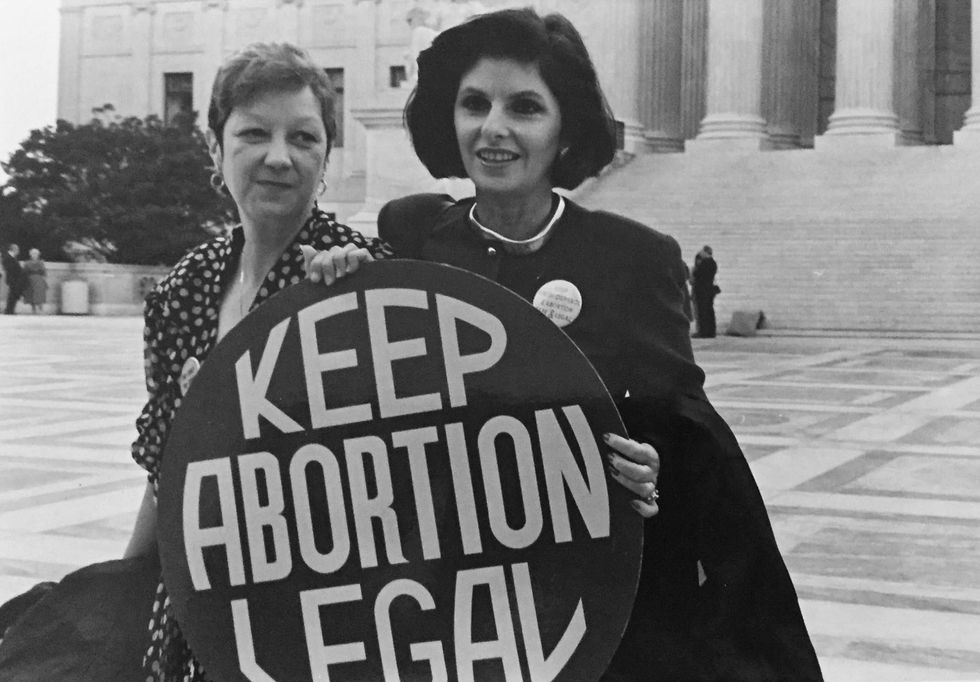Since President Trump named his new Supreme Court nominee after the late Ruth Bader Ginsburg passed away, there has been a lot of talk about Roe v. Wade. With Amy Coney Barrett being a Republican nominee, a lot of people are concerned about the Supreme Court Case, Roe vs. Wade that made abortions legal. This is such a controversy because Republicans tend to lean on the "Pro-Life" side of the argument, it has raised a lot of flags for people. The thing is, a lot of people do not understand why Roe v. Wade was such a major court case and the history behind it. So really, what did it accomplish and what would it be like without it?
Roe v. Wade
In early 1973, the Supreme Court had given the right to women to choose to have an abortion for any reason, completely legalized. This happened because of a woman by the name of Norma McCorvey wanted to end her pregnancy, that she did not want. Being that she was in Texas at the time of her pregnancy (1969), the procedure of abortion was in fact legal, but this was only in certain cases in which it would protect the woman's life. Women who sought this procedure out either had to go to another country or pay a doctor an extreme amount of money to do it secretly; McCorvey could not afford these options.
Though she had tried to have an illegal abortion done, she failed and turned to Texas attorneys Sarah Weddington and Linda Coffee. McCorvey later became known as "Jane Roe" in the official court documents.
Henry Wade, the District Attorney in Dallas, was put on the defense as a lawsuit was filed against him on behalf of every woman who might need to look at abortion as an option. In 1970 when the Texas courts ruled that it was illegal to ban abortion because of a Constitutional violation, Wade still said he would prosecute any doctor that went through with it.
Once in the hands of the Supreme Court, they ruled in favor of Norma McCorvey 7-2 and legalized safe abortion all throughout the country. It was here they divided up a pregnancy into the 3 trimesters that are used today and put rules and regulations during each trimester. In the 1st trimester, the woman has full power to decide want she wants to do. The 2nd trimester is left up to the government, without banning abortion but making sure it is safe for the woman. The 3rd and final trimester gives the state the power to ban abortions, only during this trimester, as a way to protect a fetus that can survive outside of the womb, unless the woman is at risk.
What would happen without Roe vs. Wade?
Obviously, the Supreme Court ruling America uses today was not always in place, so it is safe to say what it would be like without having the ruling. Before the time of Roe v. Wade, women sought out many ways to remove a fetus, and they were not the easiest topics to explain or discuss.
During the early 1800s, abortion was actually legal in the country up until when a woman could feel the fetus move inside her, which would be around the fourth month. If women wanted an abortion, many times they would use a form of a drug to induce an abortion, but were found to be deadly to the woman. Still, it was given out by doctors and used by women regardless of the warnings.
In some cases, in years prior to the court case, many women saw abortion as the only option, not as a last resort as it is seen in today's society. In this case, women turned to illegal or even self-induced abortions. With lucky cases, women would go to underground networks, such as "Jane" in Chicago, where women would help other women get the information and safe help that they needed. If a woman went through an illegal abortion, many times it would lead her straight to the emergency room where people. were more concerned about catching the doctor that did it rather than care about her health. Many women who entered the emergency rooms did not survive.
When women could literally not afford anything, they would attempt at performing the abortion themselves. The most infamous way was using a coat hanger, but there were many other objects women would use to remove the fetus alone. These items included pens, pencils, cotton, Coca Cola bottles, Clorox, and rubber covered sticks.
Roe v. Wade is more than just a court case supporting the political argument of "Pro-Life" vs. "Pro-Choice". It was made to give women the option as a final result to ending a pregnancy and, most importantly, protecting the woman's health. History has shown that countless women have suffered at the hands of not being able to go through the process legally. No single Supreme Court Justice could overturn a law that protects women's rights and her health.











